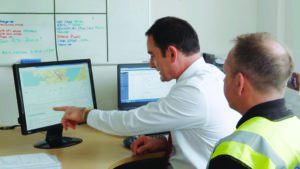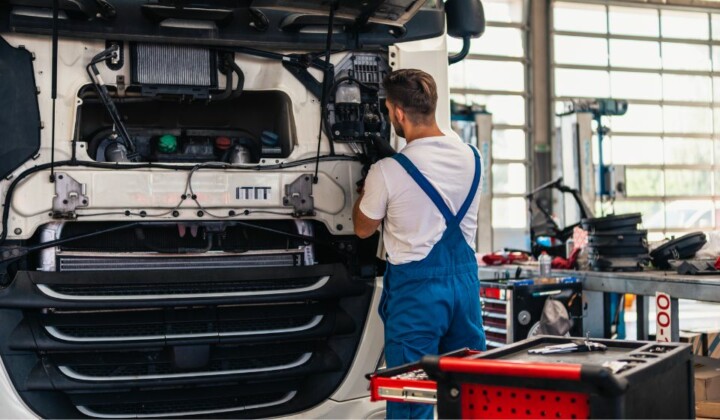 You’ve got to measure it to manage it. That’s as true in road transport as it is in any walk of life. Telematics lets you understand how drivers are performing, but it is up to you and your operation to decide what you do with that information to affect change.
You’ve got to measure it to manage it. That’s as true in road transport as it is in any walk of life. Telematics lets you understand how drivers are performing, but it is up to you and your operation to decide what you do with that information to affect change.
So what are the key things to consider when designing an incentive programme to motivate your drivers to improve? Are league tables effective? Should cash bonuses be paid?
We’re sure there is no single right answer, but in this blog we’ll take a look at some of the important factors which should be considered.
Recognition
Feeling appreciated goes a long way. Rewarding drivers isn’t necessarily just about getting an extra infusion of cash at the end of the week, or month. Often it is about being recognised for a job well done. A simple thank you from the boss goes a long way towards increasing motivation and morale. It’s a simple thing to address, but making sure this is considered and that staff get the recognition they deserve will pay off in the long run.
Cash
Let’s not beat around the bush – cash can play an important role. In a TED talk on incentivisation and motivation, expert Daniel Pinkman describes how so-called “if-then” rewards are effective with tasks where there is a clear set of rules and desired outcomes. In the case of driving, where rewards can be closely linked to positive outcomes, they can work very well. If, for example, idling reduction is objective number one, you could give the top 10 drivers with the best idling scores each month a cash bonus. That said, be cautious not to over-use this tool, as it can lead to a transactional approach and may mean you’ll overlook other motivational tools.
Spread the Reward
Don’t just have one big winner every month, have many winners getting a share of the success. This way drivers feel they are in with a greater chance of taking something home and will try harder to improve.
Kill off Ambiguity
Letting drivers know exactly what the rules of engagement are, and what rewards are for, is critical. You may even risk demotivating the team if some drivers are recognised and others are not, without clear reasoning. There should always be specific and unambiguous rules, and when drivers meet the required criteria, they should be rewarded without any fuss.
Keep it simple
Focusing on one or two aspects like green band driving and idling, or anticipation and cruise control, will mean the drivers “get it” and trainers can better educate the team. Consider running campaigns which focus on one or two key elements that you know will deliver a solid return for the business. As and when campaign objectives are met, the focus can shift on to a new outcome, leaving a legacy of benefit. Over-complicating any scenario will lead to a less effective incentive programme.
Set realistic, achievable and clear targets
It’s tempting to set a ‘pie in the sky’ objective, with the hope that even if drivers get 70% of the way towards attaining it, then the improvement will be worth it. But making targets this difficult to achieve will inevitably mean that drivers disengage with the process and may stop trying.
Non-Cash Rewards
A 2013 study of more than 1,000 workers by the Institute of Leadership and Management found that cash is not always the most effective incentive to increase motivation. Furthermore, in a 2016 survey, the Incentive Research Foundation found that 81% of UK companies are using non-cash rewards with improving productivity and morale two of the leading reasons. We would suggest taking the time to understand what your drivers value the most, and where possible offering this as a reward for hitting targets. Consider giving your best performing drivers something that money can’t buy, like the option to choose the routes they’ll drive, or the shifts they work. Alternatively a day out for them and their family could also work well.
Competition
Introducing league tables is another obvious way of achieving better driver engagement. Who wouldn’t want the peer recognition that comes with topping the table? You can decide which factors are most important to you and your operation, then gear the table to that. Often efficiency is the most important factor, but as our customer John Mitchel Transport underlines in this case study, focus on driving style and the rest will follow.
Empowerment
Knowledge is power. Give drivers access to their own performance grades and they will take more responsibility for improving. Systems like the Microlise Driver Performance Management (DPM) app give access to overall grades and enable them to drill down to look at their scores across key performance indicators such as speeding, idling and harsh braking, letting them see where they can get better. They can even get tips and advice on how to improve, and the ability to view the location of any infringements on a map.
This isn’t an exhaustive list of everything you need to consider – but aims to be a checklist of some of the key things to think about. Different techniques will fit best in different companies and each team is different. That said, we hope it gives you food for thought.




